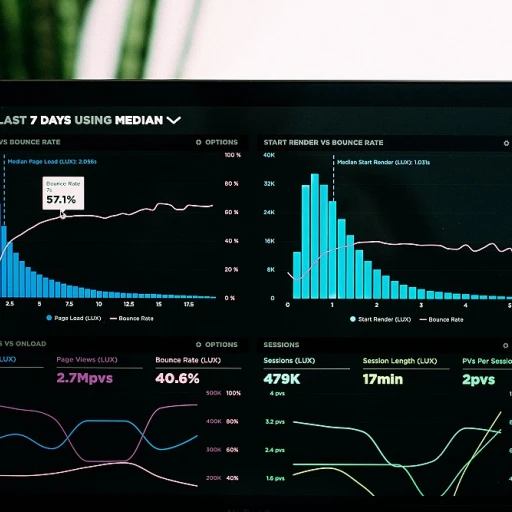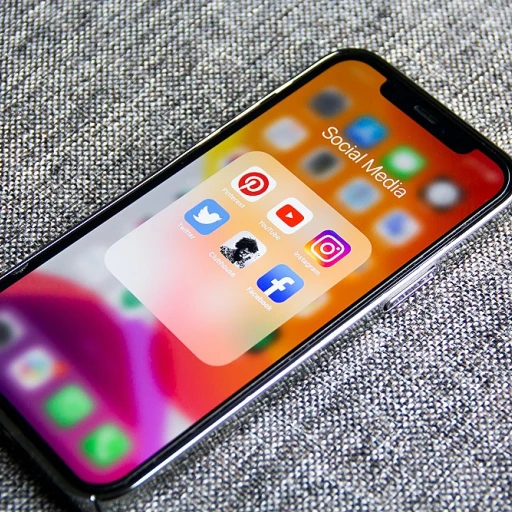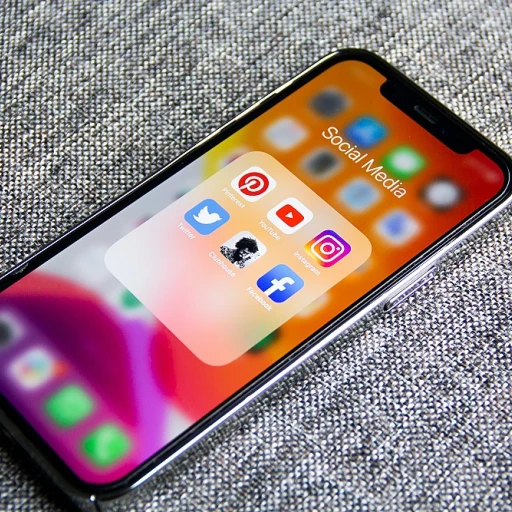The Role of AI in Enhancing SEO for Influencer Marketing
AI-Powered SEO Strategies Revolutionizing Influencer Marketing
In the ever-evolving world of influencer marketing, artificial intelligence (AI) is playing a transformative role. As brands look to optimize their marketing strategies, leveraging AI can significantly enhance search engine optimization (SEO) efforts, particularly when collaborating with influencers. Through data-driven insights, AI can help brands understand which macro influencers align best with their objectives and target audience. AI tools can analyze vast volumes of data related to influencer profiles, including follower count, engagement rates, and post performance across social media platforms like Instagram and TikTok. By doing so, brands can make informed decisions on the best partnerships for maximizing their campaign's impact. AI also aids in predicting trends and content performance, allowing brands to optimize their content strategy. By examining engagement patterns and audience preferences, AI can suggest relevant themes and topics to feature in influencer collaborations. This tailored approach ensures that marketing efforts resonate with the audience, ultimately increasing follower engagement and brand visibility. Moreover, AI algorithms can fine-tune search engine strategies by targeting the right keywords and optimizing content for better visibility on search platforms. Whether it's influencer pricing models or strategies for long-term collaborations, AI's ability to process and interpret data can offer brands a competitive edge in influencer marketing. Using AI tools doesn't just stop at the planning phase. Brands can leverage these technologies during influencer payments by analyzing their return on investment and adjusting engagement rates accordingly. This ensures that their investments are optimized for maximum reach and effectiveness. For further insights on how AI intertwines with ethical SEO practices and influences the broader digital marketing landscape, explore ethical AI in SEO practices. This resource delves into the nuances of integrating AI ethically to drive search success without compromising on integrity.Understanding Macro-Influencers and Their Impact
Influencer Tiers and Their Impact on Audience Growth
In the world of influencer marketing, understanding the different tiers of influencers is crucial to optimizing the reach and impact of your campaign. Each tier offers unique benefits, challenges, and potential rate structures.- Nano Influencers: With a follower count typically below 10,000, these influencers offer high engagement rates. Though their audience size is limited, their personal and often localized connection with followers can drive more authentic agreements and ambitious engagement.
- Micro Influencers: Touting between 10,000 to 50,000 followers, micro influencers maintain close-knit communities. They offer strong engagement rates and allow brands to tap into niche markets effectively.
- Mid-Tier Influencers: With followers ranging from 50,000 to 500,000, mid-tier influencers balance engagement with broad reach. They strike a sweet spot in influencer marketing, promising robust returns without the hefty costs associated with more high-profile influencers.
- Macro Influencers: Tapping into vast audiences, these influencers have between 500,000 to 1,000,000 followers. They are central to campaigns focused on extensive brand awareness across various platforms, including Instagram and TikTok.
- Mega Influencers: Influencers with over a million followers bring unparalleled reach, but also command premium rates. Including them in your influencer marketing strategy can significantly boost brand visibility, although budget considerations are paramount.
The Role of Engagement and Platform Choice
Engagement rates play a crucial role irrespective of influencer tier. Platforms like Instagram and TikTok allow for immediate content sharing and interaction, enhancing the value proposition for brands. By understanding the engagement dynamics, brands can strategize better, ensuring measurable performance-based outcomes. Moreover, influencers’ followers on different social media platforms can vary, influencing the type of content shared. Marketing campaigns should consider these variances to determine optimized influencer payments and pricing models. For an insightful analysis of how AI intersects with these practices, the ethical implications of AI in SEO practices provide valuable insights, keeping brands informed of evolving trends.Pricing Models for Macro-Influencer Collaborations
Exploring Pricing Strategies in Influencer Collaborations
When setting up a partnership with macro influencers, understanding the pricing models is crucial for both brands and influencers. There are several strategies that you can use to determine fair and competitive influencer pricing.- Flat Fee: This is one of the most straightforward pricing models in influencer marketing. Brands agree on a specific amount to pay influencers based on their follower count and the type of content they will create. The cost usually varies depending on the platform – such as Instagram or TikTok – and the influencer's reach.
- Performance Based: In this model, influencer payments are determined by how well the content performs. This includes metrics like engagement rate, followers gained, and post reach. This approach often involves more risk for the influencer but can be advantageous for brands as they pay for actual results.
- Product Exchange: Particularly popular with nano influencers and micro influencers, brands provide their products or services as a form of compensation. While not typically used for macro influencers given their larger audience, this model can still appear in long-term engagements.
- Tiered Pricing: Businesses may also adopt a tier system based on influencer follower count and engagement rates. For instance, rates may vary significantly between mid tier influencers and mega influencers. Brands can utilize this approach to ensure that they offer competitive rates that match the influencer's reach and demographic.
Ensuring Effective Rate Decisions
When brands embark on influencer collaborations, proper pricing strategies need to be set based on accurate data. This involves comprehensive analysis and evaluations of influencer follower statistics, engagement rates, and social media platform trends. For more insights into AI-driven pricing strategies and ensuring your campaigns align with market practices, consider exploring additional resources like Beyond Code: Unveiling Bias and Ensuring Fairness in AI-Powered SEO. It provides guidance on using AI tools to optimize pricing while maintaining ethical standards and transparency in collaborations.Payment Guidelines and Best Practices
Streamlining Transactions: Implementing Secure and Efficient Payment Procedures
When collaborating with influencers on platforms like Instagram and TikTok, brands must establish clear and fair payment practices. This involves determining influencer rates and selecting a payment model that aligns with campaign goals. Implementing structured guidelines for processing payments ensures transparency and builds trust between the brand and influencer.
Marketers rely on varied payment models for influencer collaborations, often based on factors such as the influencer's follower count, engagement rate, and platform performance. For macro influencers, pricing is typically higher due to their broad reach and potential impact on brand awareness. Depending on the campaign objectives, payment models can range from flat fees to performance-based compensation.
To maintain consistency, brands should adhere to a few best practices:
- Clear Contracts: Document all agreed terms and conditions in a contract, detailing expectations, deliverables, and payment timelines.
- Transparent Communication: Establish open lines of communication to address any concerns or changes during the campaign.
- Secure Payment Methods: Utilize reliable payment platforms to ensure timely and secure transactions, protecting both parties involved.
- Timely Payments: Prompt payment reflects professionalism and fosters long-term relationships with influencers.
A well-outlined payment process not only enhances the partnership experience but also boosts the overall efficiency of influencer marketing campaigns. By focusing on these guidelines, brands can create a conducive environment for influencers to deliver authentic content to their audience, leading to impactful marketing results.
AI Tools for Optimizing Influencer Collaboration Pricing
AI Tools Revolutionizing Influencer Collaboration Pricing
Artificial intelligence has become a cornerstone in optimizing influencer marketing strategies, particularly when it comes to determining the right pricing for collaborations. By leveraging AI tools, brands can ensure they are getting the best value for their marketing spend while influencers receive fair compensation for their efforts.
AI tools analyze vast amounts of data from social media platforms like Instagram and TikTok, focusing on metrics such as follower count, engagement rates, and audience demographics. This data-driven approach allows brands to tailor their campaigns to target the right influencers, whether they are macro influencers, mid-tier, or even nano influencers.
- Dynamic Pricing Models: AI can help create dynamic pricing models that adjust based on the influencer's performance metrics. For instance, if an influencer's engagement rate increases, the pricing can be adjusted accordingly to reflect their growing influence.
- Predictive Analytics: By utilizing predictive analytics, AI tools can forecast the potential reach and engagement of an influencer's post, helping brands make informed decisions about their investments.
- Performance-Based Payments: AI facilitates performance-based payment structures, ensuring that influencers are compensated based on the success of their campaigns, such as increased brand awareness or sales conversions.
Moreover, AI can assist in identifying the most effective platforms for influencer campaigns. Whether it's a TikTok influencer with a highly engaged audience or an Instagram influencer known for high-quality content, AI tools provide insights that align with the brand's goals and target audience.
Incorporating AI into influencer marketing not only streamlines the pricing process but also enhances the overall efficiency of campaigns. As brands continue to navigate the complexities of social media marketing, AI stands out as a vital tool in achieving optimal results.













